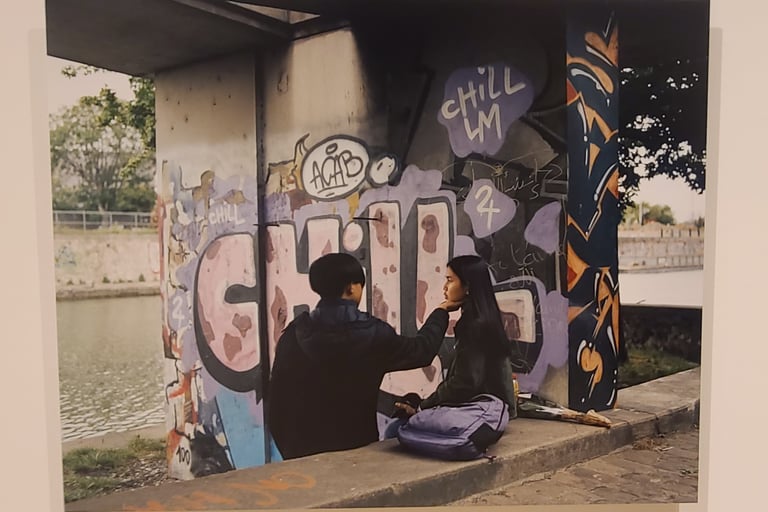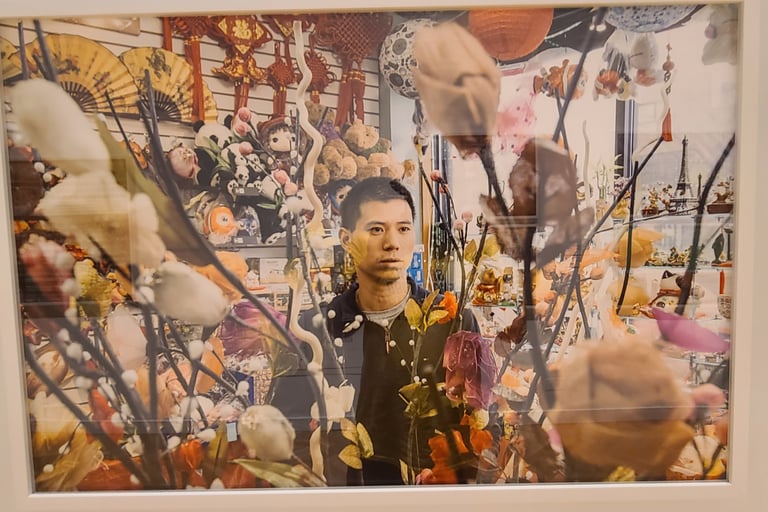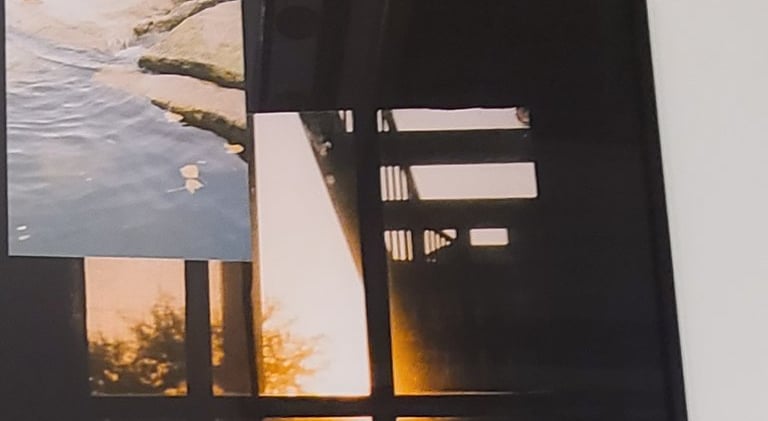Opening Passages - A Visual Exploration of Urban Identity
"Sister Cities" Chicago and Paris may be thousands of miles apart, but the photography exhibition "Opening Passages" emphasizes the shared existence between their populaces and humanity at large
VISUAL ARTARTSEXHIBITONS
The Chierophant
5/10/20247 min read
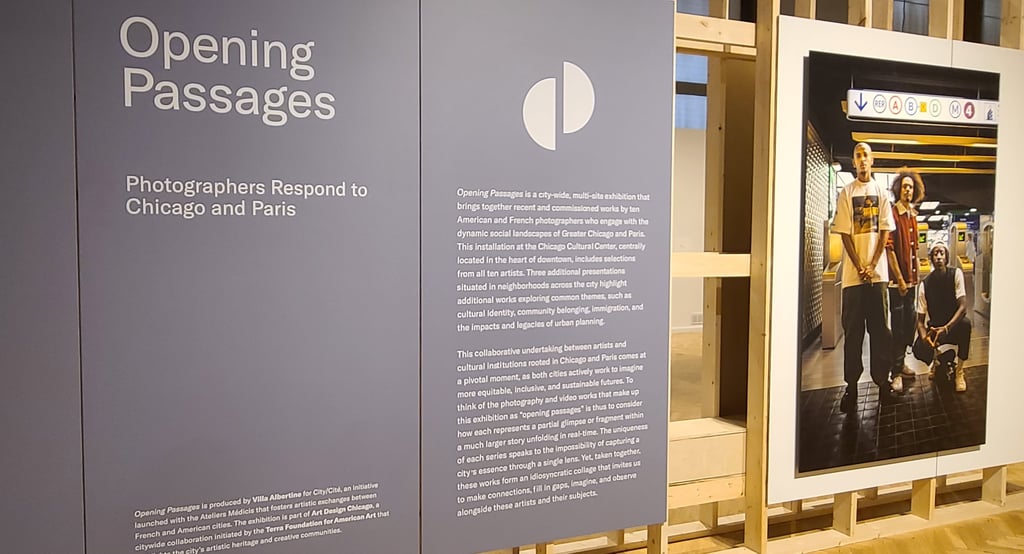

The words “opening passages” is a double entendre of sorts. In its most literal interpretation, it conveys forging a new path, unimpeded by obstacles. It also represents the words that begin a story, the first lines in a new narrative. The photography exhibition of the same name, currently housed on the top floor of Chicago’s Cultural Center, conjures both of these meanings as it highlights the multiple worlds that exist within Chicago and Paris, embracing these municipality’s long standing connection as “sister cities”.
The relationship between these distant cities is deceptively intimate and straightforward: Both are similar in population size, described as “global cities” and homes to a diverse yet highly segregated populace. Both are global cultural hubs, having greatly contributed to the music, art, and literary worlds. Both are a destination for people in search of a new life, and both have highly documented struggles to accommodate an influx of migrants seeking asylum. While the similarities between Chicago and Paris are a major motif, the true subjects of the exhibition are the people residing within and cultures permeating from each city.
The expansive photography and multi-media exhibition highlights the complications that arise from living in a metropolis as diverse yet stratified as these two sister cities. Though thematically cohesive, the variety of works and presentation styles reinforce the distinct perspectives and messaging of the 10 artists included in the exhibition. Among the collages, slide shows, videos, and paired audio logs, the artwork naturally fell into two major temporal motifs: the historical yet persistent realities of displacement experienced by marginalized residents from each city and the envisioning of a more just and equitable future. Fitting, since as one pauses while traversing a “passage” they can either look backwards from where they came or further down the path.
The artists whose work largely examined the past and present focused on humanizing the victims of societal trauma to create empathy between victim and the, often faceless, perpetrator. Sasha Phyars-Burgess’s work highlighted the people of Chicago’s Austin neighborhood – a place with a reputation as one of the most dangerous areas of the city. Despite this notoriety, Phyars-Burgess’s documentation is a reminder that Austin, like any place in the world, is inhabited by people with dreams, desires, families, and needs. In a world where black existence is often treated as a monolith and met with indifference or outright hostility, these portraits are a compassionate reminder that everyone deserves safety and community.
Deeper into the space were a series of pigment prints on silk by Rebecca Topakian that mimicked the leaves of a tree. While many of these images looked very similar, the unique naming convention implied how small differences among largely similar organisms can have enormous consequences in how they are perceived. For example, one piece was called “these species are able to speak French, so they’re French” next to another titled “we must act before they become too numerous”. It was a reminder that despite the manufactured divisions that society imposes, we’re all kin within the human species.
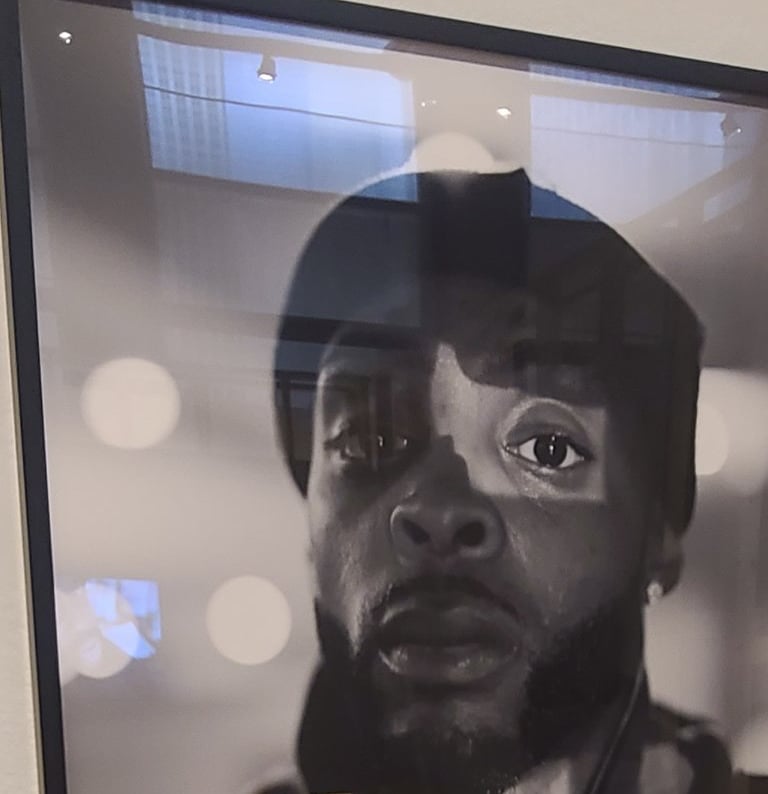

Gilberto Güiza-Rojas’s work viscerally explored one of the often overlooked ways an immigrant can lose their identity – the loss of career and social status. Things often get lost in a move, even if it’s a simple and well planned relocation across town - let alone a move across the globe. This work empathizes those who have moved long distances, often under duress, and highlights the sacrifice of something less tangible and more intrinsic to self. Güiza-Rojas’s work puts these sacrifices front and center by highlighting skilled workers who left their former occupation behind, often having to accept a new reality divorced from the careers that formerly defined their existence.
The photography and interviews by Tonika Lewis-Johnson, part of a series named “Belonging”, follow a similar theme of a call for dignity, but her subjects explore a loss that occurs in their homeland at the hands of one’s own countrymen. At first glance, these were portraits of individuals in seemingly arbitrary spaces they inhabit. Upon scanning the accompanying QR code, each picture was paired with an audio narration expounding on the themes of exclusion within one’s own place of residence. By showing subjects in the seemingly anodyne location of their debasement combined with the first-hand recounting of the experience, it becomes a powerful message about how wantonly one’s sense of “home” can be shattered.
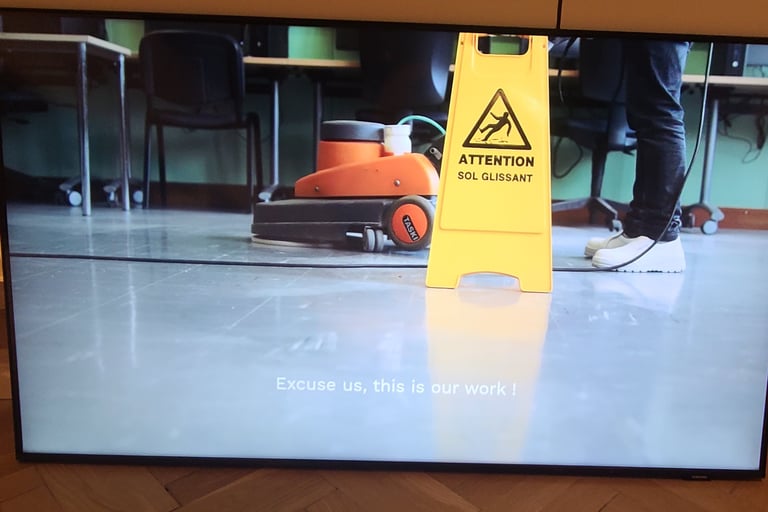

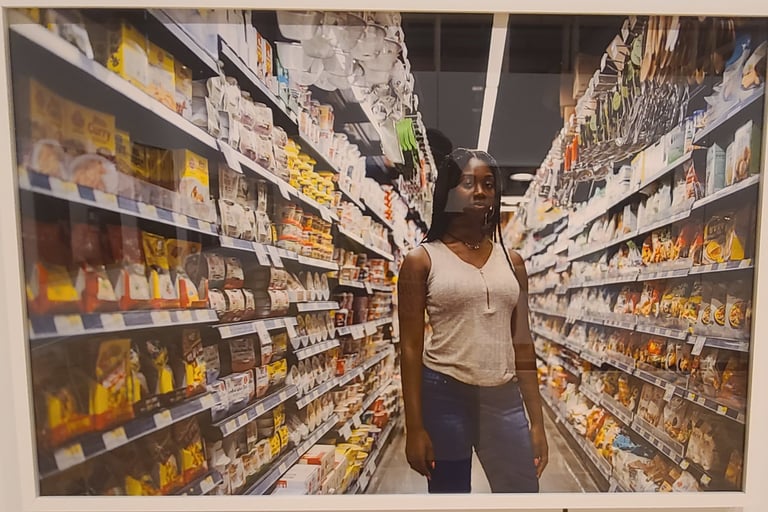

There were two collections of work that traversed the space between past and present through the subject of railway landscapes. Karim Kal’s black and white photography immortalizes the Paris metropolitan Regional Railway System “D” line through photos of liminal spaces and abandoned urban environments, simultaneously both innocuous and ominous. The short range flash photography was a rumination on the empty promises that these urban revitalization projects can come to represent, where the optimism of jobs and connection quickly become edifices to socio-economic structures that are as concrete as the infrastructure supposedly created to destroy them.
Conversely, Assia Labba’s bright and colorful photography was a stark visual contrast that nonetheless captured a similar sentiment. The work was presented through both Kodachrome slides on the walls, arranged in a way reminiscent of the windows of a train car, and these same images as part of a multimedia slide show featuring recorded conversations from riders on the "B" line of the Paris Regional Express Network of trains. These objectively and traditionally beautiful images of classic architecture, arboreal landscapes, and local shops were juxtaposed against the subject of her eavesdropped conversations – featuring discussions focused on how evident the changes of economic demographics were depending on the time of day and section of the railway. The recorded audio touched on both sides of the class divide, with some riders espousing on how to visually fit in with the bourgeoisie contrasted with “upper class” people remarking on those who didn’t have the means to disguise their humanity as well as they could. It was a stark reminder that despite the physical proximity of people of disparate socio-economic classes, the division among these groups permeated beyond the spatial and into the psyche of each group. The prior two artist’s works functioned as a railway both literally and figuratively connecting a difficult past to a (sometimes) more idyllic future.


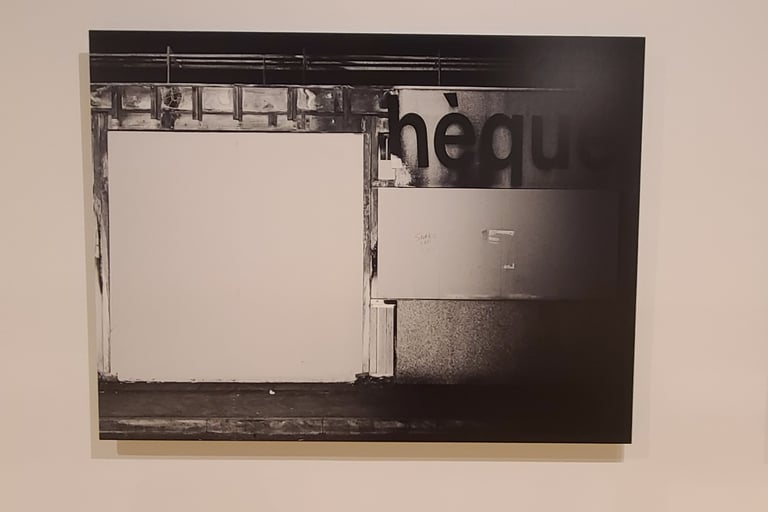

Marion Poussier’s work was largely captured during the pandemic, representing the first looks of the so called “new normal”. Photographed exclusively outdoors, presumably due to restrictions on indoor gatherings, the pieces were largely “slice of life” shots, documenting the ways people continued to live despite the regulations that were imposed across the world. The bright and uplifting colors in the clothing, graffiti, and flora served as a reminder of the vibrancy of human existence despite the uncertainly ahead. Ultimately, the human experience requires gathering together, practicing self care, and tending to our personal space - even when the world stops turning, the machinations of life do not.
The idyllic nature of place and movement was interrogated by Marzena Abrahamik’s collages. The two complementary works were ornate mosaics of Poland featuring flowers, fashion adverts, and flags, together functioning as a monument to a home both lost and found. The work was a melancholy reminder of the forces that can prevent one from ever finding their true place, and how the idealized version of homeland can sometimes be exactly that – an ephemeral mirage that quickly dissipates - leaving one nostalgic for a place that no longer exists and maybe never really did.
The most conceptual work of the exhibition was a collection of collages by zakkiyyah najeebah dumas-o’neal, largely composed of images of water and archival photos from her family and community. Just as water can adapt to fit into any space and a small stream eventually wears down the strongest stone, so does community and humanity persist despite the forces that often work to subjugate or control. It was a reminder that despite current circumstances, nature always wins, regardless of if that nature is manifested in waves of a lake or the resilient nature of the spirit. The overtly calming collages prompted thoughts of a future where humans are allowed to simply exist, outside of the bounds of race, productivity, and past trauma.
The final images in the series were saturated with both color and cultural iconography, representing a sort of optimum outcome when considering immigration and identity. The subjects of the images, captured by Jonathan Michael Castillo, were immigrant small business owners from Chicagoland, success stories of those who were able to transplant their roots without losing their leaves. It was a reminder of the unique nature of Chicago and a microcosm of the United States at large. While the country is considered an ethnic “melting pot” it may be more accurately described as a buffet – segregated groups of different flavors that beckon to share a sample but are impossible to reproduce without understanding of the history and traditions that created them.
Chicago and France both have a reputation of cultural vibrancy that is largely owed to their inhabitant's diversity and resilience of tradition. The segregation emblematic to these cities acts as a double edged sword. Depending on how its wielded, it sometimes cuts deep fissures that wounds the populace and other times slashes through the brush, connecting different lifestyles, values, and legacies while “open passages” towards a more unified and accepting mindset.


